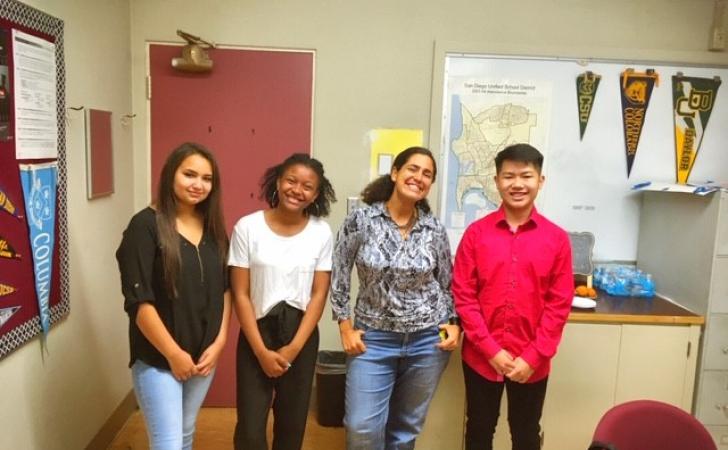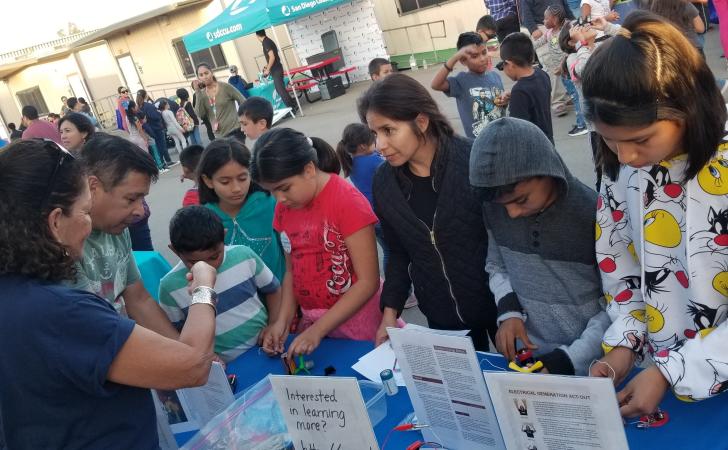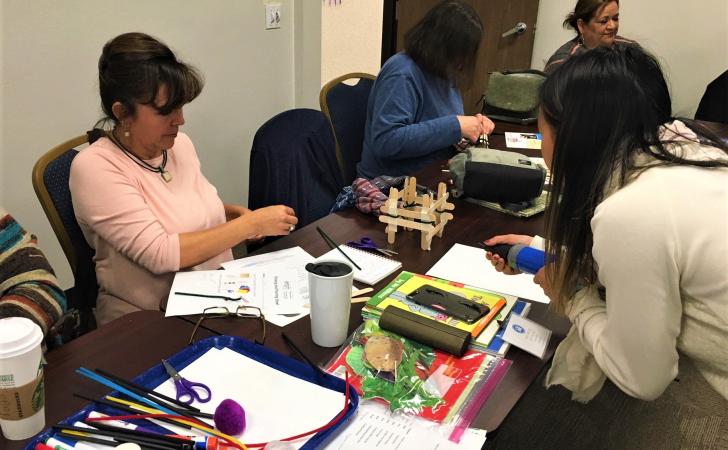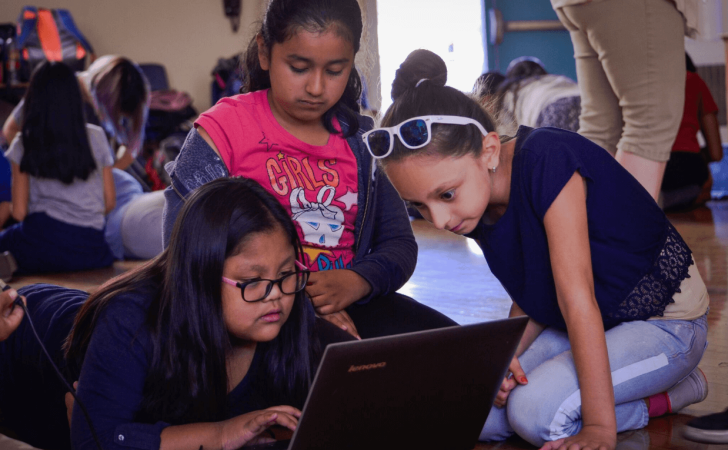Promising Practices to Elevate STEM Teaching from Home
Contributed by Jaclyn Sarnese, founder of Elevated STEM Teaching consulting and co-chair of the Innovation in K-12 working group.
As teachers, parents, students and administrators were forced to reimagine school over that dreaded weekend beginning Friday, the 13th of March, I too had to reimagine how to provide support to teachers during such uncertain, uncharted times.
Instead of assuming anything, I listened, which is the best piece of advice I can give every leader, consultant or otherwise interested party trying to help solve today’s problems. Feel the need to take action? Create environments with a designated time and place to listen, reflect and brainstorm collaboratively with whomever you are serving. Next, ask good questions. Good questions are open-ended and carefully-worded not to steer answers in any direction. They are crafted in a manner where responders can brainstorm what will make their life easier or help them reach their goals and aspirations without dwelling on the negative.
Based on my listening and brainstorming sessions, I have developed this list of strategies to elevate your teaching practice now, as well as in the next normal. Please keep in mind that this list is not exhaustive, but just some of the best transformative practices that I have encountered thus far:
1) Get students talking
Facilitate more classroom discourse was my #1 recommendation to teachers before transitioning to distance learning, and now it is even more important than ever. Think about young children learning a new language - they learn to speak before learning to read or write. As STEM educators, we often introduce kiddos to new, dense terminology that they’ve probably never been exposed to before...just like a new language. Providing the time, space and support to practice speaking out loud will greatly help your students master the concepts and terminology before requesting written assignments.
Beyond instructional content, it is more important than ever to engage with your students’ social-emotional centers during these uncertain times. While writing this, we have been experiencing a traumatic global pandemic for 10 weeks with no end in sight, and that is weighing on everyone regardless of whether you can identify that weight. About ⅓ of every adolescent’s daily life used to be spent in a physical place called school, and now they might go days without leaving the house. Ask them how they’re feeling. Ask them about their favorite animal or ice cream. Combine the two and ask them how a scientific phenomenon makes them feel. We are better able to retain information when connected with stories, places and emotion.
If you use Zoom for conference software, you can split kiddos into smaller Breakout Rooms to facilitate small-group conversations. As the teacher or meeting host, you can circulate between the breakout rooms to comment and redirect as needed. You can manipulate Google Meet to create fictitious breakout rooms as well. If you are not holding “live” class sessions, perhaps you want to checkout video messaging software such as Loom or Flipgrid.
2) Involve the Whole Family
As the school paradigm is completely reimagined, we must also consider how units-of-learning are changing concurrently. Previously, the unit-of-learning was a [somewhat] homogenous classroom with about 30 students all the same age, learning the same content at the same time. Now, the unit-of-learning is a mixed-age, heterogeneous household: all of whom have just had their lives overthrown and are now competing for screen time. Does the household have a computer...let alone several computers? Is the household connected to reliable WiFi? How many individuals are working or schooling from home? How often are classes/meetings? Are they live or self-paced?
These are just a few of the essential questions we must ask ourselves as we reimagine virtual or hybrid models of school. While there are clearly several directions to steer toward equity, one recommendation is to work collaboratively to create lessons that families can do together! Thankfully NGSS (Next Generation Science Standards) makes this work easier since the standards are already broken down by grade band (K-2, 3-5, 6-8 and 9-12).
My recommendation is for teachers to first co-lesson design with colleagues in the same grade band. Once that feels comfortable, invite teachers from neighboring gradebands to co-lesson design. If you are familiar with the 5E Instructional Model (BSCS), I find it easiest to collaborate on the Explore stage, especially when spanning grade bands. What would be an engaging hands-on activity for learners of all ages that promotes critical thinking and sensemaking? All-level teachers can collaborate on designing that stage, but the introductory and concluding activities can differ based on grade-appropriate content and skill development. This can help reduce the number of different or competing assignments that families have to facilitate at once. This can also decrease the amount of teacher time spent preparing and grading lessons. This may also even increase student engagement, virtual attendance and distance-learning participation.
3) Find creative ways to get students off of their devices
Adults and children alike can attest to the realness of “zoom fatigue”...or fatigue from any similar video conferencing software. Just because we are leveraging technology to organize virtual classrooms and communicate with students does not mean that all learning needs to occur virtually. In fact, make it a point to take some of the learning off screen!
Assignments can be presented virtually (or with lunch pickups, as I know several districts are doing), but have students perform some part of the activity off-device (or off-paper). A great example would be the family-friendly activities that I talked about in #2- have students discover some phenomenon/a themselves firsthand. You can provide well-communicated prompts to ensure that students are ready to learn as well as follow-up activities to guide students to connect their interactions to the intended content.
A respected colleague’s motto is “Exposure, not Exhaustion to technology” (Hands-On Technology Education). ...and right now we might be causing the latter. Similarly, I find myself reminding teachers that technology is only a tool, it is not a replacement for you. The computer nor Zoom nor Google Classroom will ever be able to replace you teaching a physical classroom of students, but you can leverage the benefits from various edtech tools to create a well-balanced, blended version of your awesomeness to present to your kiddos at home.
We do not yet know how the next normal will look, and we cannot predict what future curveballs will be thrown our way, but we can make small adjustments along a journey of continuous improvement! Focus on teaching the cross-disciplinary, foundational concepts and skills that are universally applicable. Stay relevant, and maybe read an article a day to keep up with emerging discoveries. Continue connecting with peers to share what’s working for you...and maybe even co-lesson design!
Feel free to share what’s working for you: jaclyn@elevatedstemteaching.com
Jaclyn Sarnese, MSEd is a co-chair for the Innovation in K-12 Working Group and an active member of the San Diego STEM Ecosystem. A former high school biology and biomedical science teacher, Jaclyn is the founder of Elevated STEM Teaching which specializes in professional learning and consulting. Learn more about Elevated STEM Teaching.





